|
The RS-25 engine consists of various pumps, valves and
other components which work together to produce thrust. Fuel comes from
the huge external fuel tank burning liquid hydrogen and oxidizer liquid
oxygen.
|
|
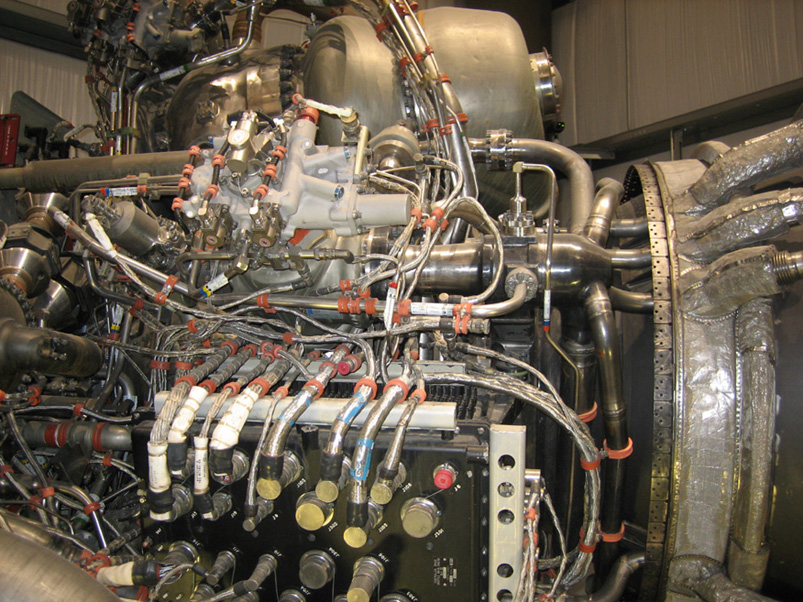
|
|
This engine uses what's called Turbopumps. There are low
speed and high speed turbopumps on the main engine and is the result of
many years of refinement. The Low Pressure Oxidizer Turbopump (LPOTP) is
an axial-flow pump driven by a six stage turbine powered by liquid
oxygen which operates at approximately 5,150 rpm. It boosts the liquid
oxygen's pressure from 100 to 420 psi.
|
|
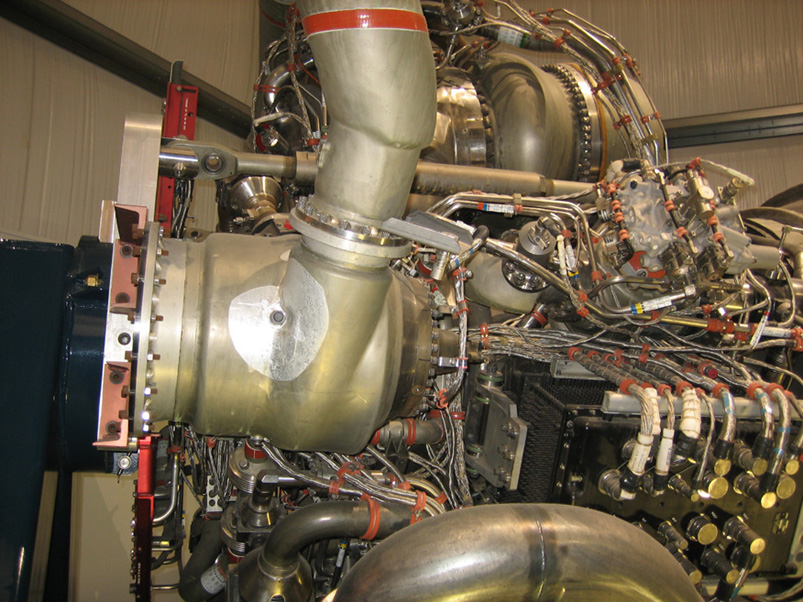 |
|
The High Pressure Oxidizer Turbopump (HPOTP) consists of
two single stage centrifugal pumps (a main pump and a preburner pump)
mounted on a common shaft and driven by a two stage, hot gas turbine.
The main pump boosts the liquid oxygen's pressure from 420 to 4,400 psi
while operating at approximately 28,120 rpm, giving a power output of
23,260 hp. The temperature in the combustion chamber reaches 6,000 °F,
higher than the boiling point of iron.
|
|
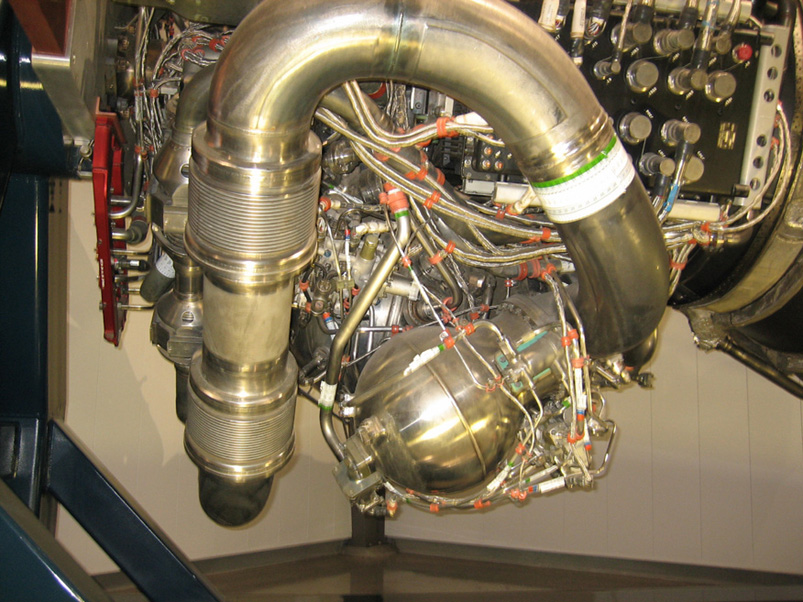 |
Click for a larger image.
|
|
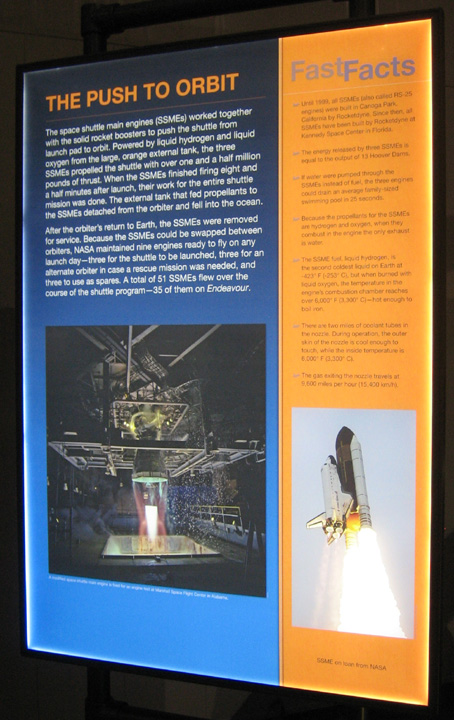 |
|
You can see a some of the many thrusters that are located
on both sides in the rear and at the nose. They all use the same solid propellant as
the OMS does.
|
|
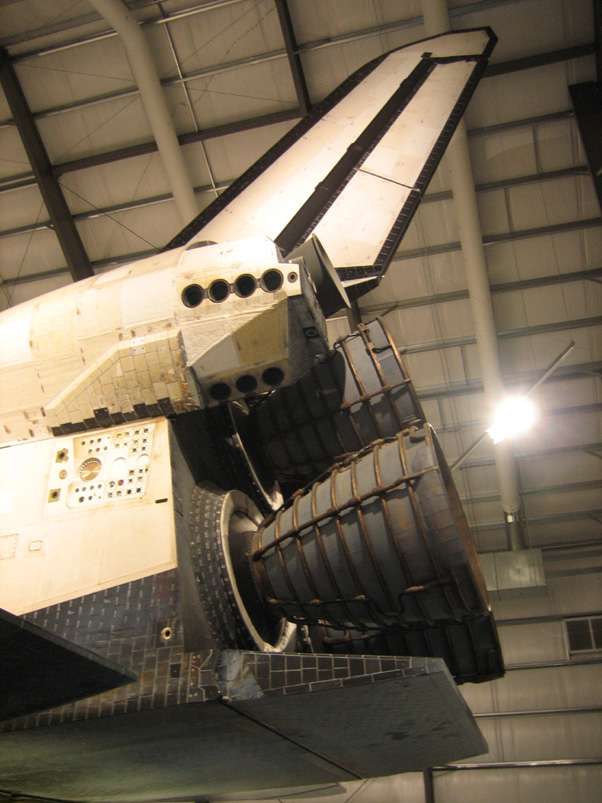 |
|
This shot gives you a good look at all the tiles along
with the leading edge of the wing which was damaged on Columbia by
falling debris during launch, causing it's burn up on re-entry in 2003.
The yellow framework holding the shuttle uses the same three mounting
points as when it's being carried by a 747.
|
|
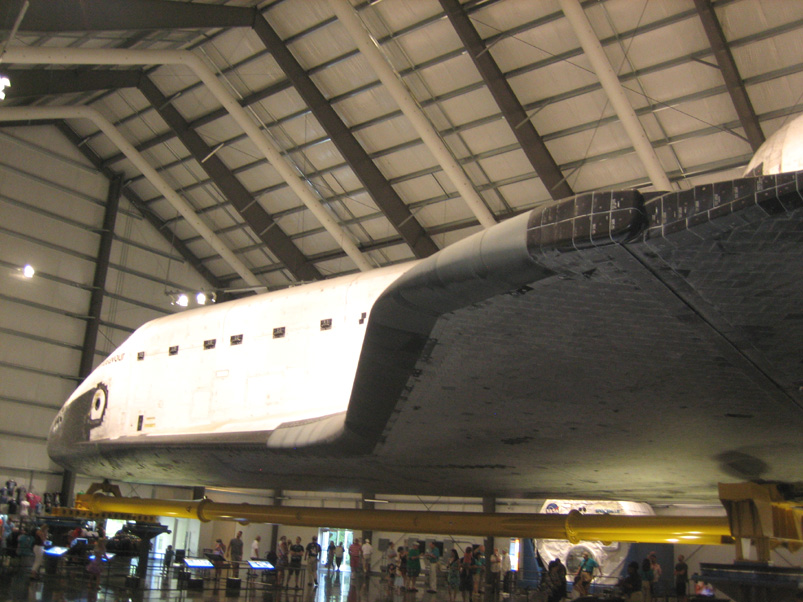 |
|
You can see three of the four large cargo bay doors along
with the American flag pointing in the right direction. You can also see
the pod which stores the solid propellant for the OMS engines and
thrusters.
|
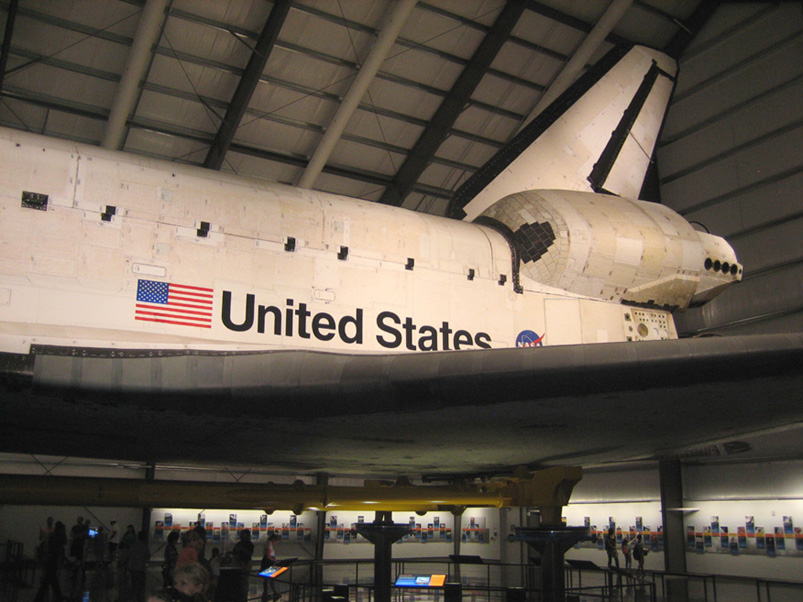
|
Notice how dirty the Shuttle is, which makes it that much more
interesting in opinion.
|
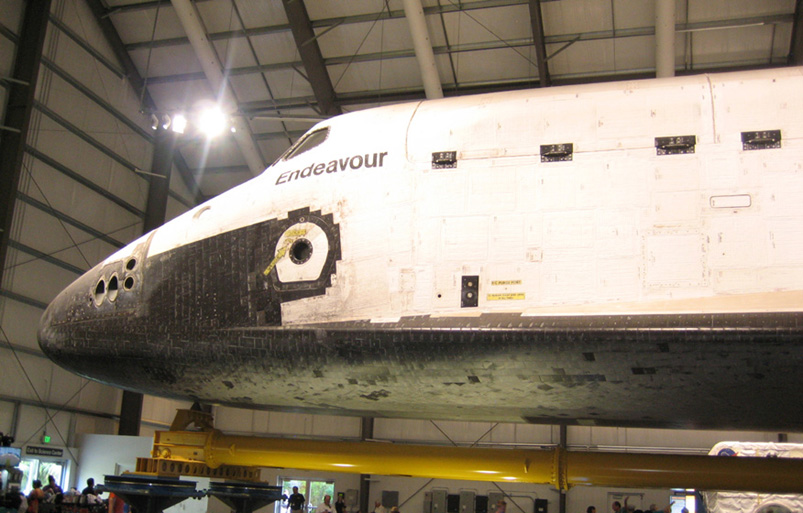
|
|
The yellow arrow says 'rescue' inside of it and is
pointing to the rescue hatch. This was added to Endeavour which the
space shuttle Columbia didn't have, not that it would've helped them.
|
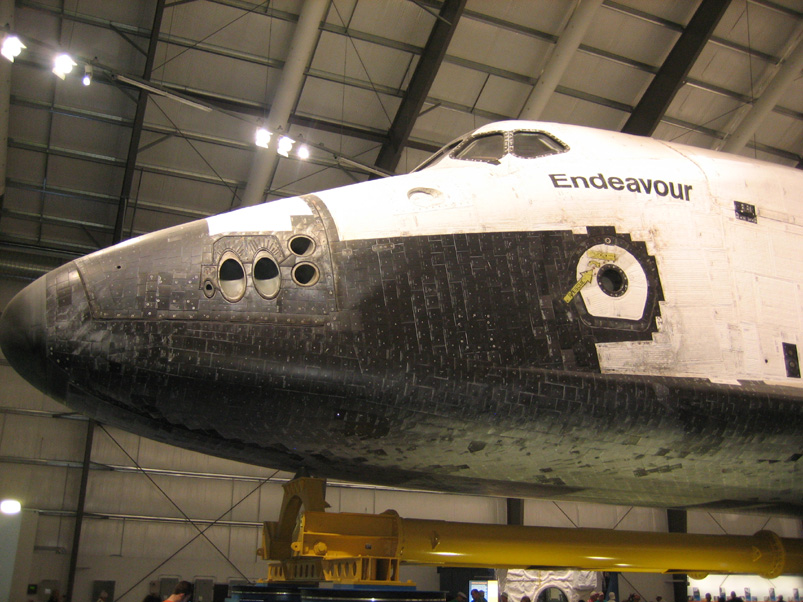
|
|
The main power sources of a space shuttle are the fuel
cells (F/Cs), which combine hydrogen and oxygen into water and derive
electricity from this process. Most of the water is used internally in
the spacecraft (either as coolant or used by the astronauts), but to
avoid degradation of the efficiency of the fuel cells, excess water is
purged from the cells into space through this port (top yellow tag) and
another like it on the other side. The bottom tag says, "to remain clear
and open at all times".
|
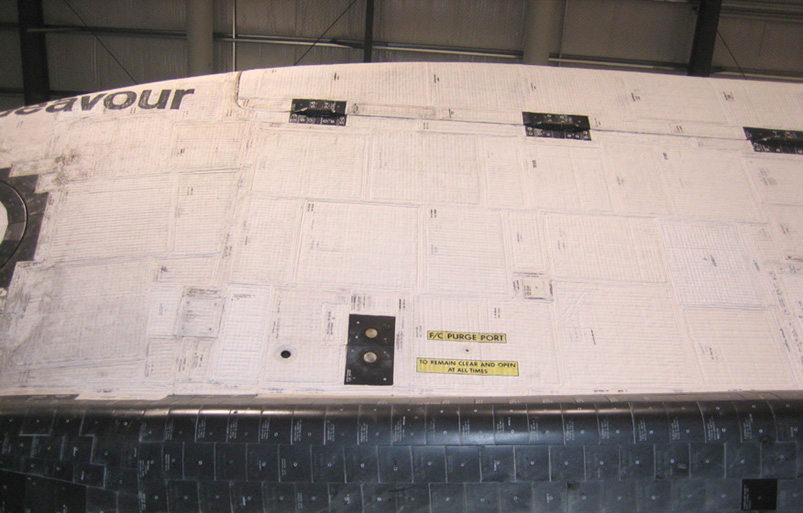 |
|
1
2
3
4
5
6
7
8
9
10
11
12 |